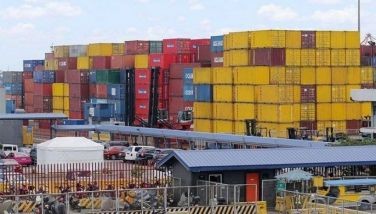Economy likely grew by 6.2 percent in Q1

MANILA, Philippines — The Philippine economy is expected to have posted a 6.2-percent growth in the first quarter supported by gains in the labor market and manufacturing, as well as government spending, according to First Metro Investment Corp. (FMIC) and the University of Asia and the Pacific (UA&P).
“We expect GDP (gross domestic product) to expand by 6.2 percent in the first quarter, an upward revision from our previous forecast of 6.1 percent,” FMIC and UA&P said in the Market Call report for April released yesterday.
They said the forecast is based on high record levels of employment.
“Strong employment gains in the last six months to February provide good basis for GDP growth in the first half, since empirical evidence show that employment gains precede GDP growth,” FMIC and UA&P said.
Aside from employment, FMIC and UA&P said manufacturing output, which accelerated each month since November 2023 to February 2024, and increased national government spending on infrastructure would also support growth in the first quarter.
While inflation may quicken to 4.2 percent in the second quarter, the two institutions expect it to revert back to the two to four percent target range of the Bangko Sentral ng Pilipinas (BSP) by the third quarter.
They also expect inflation to end the year at an average of 3.8 percent, still within the BSP target.
Inflation accelerated for the second straight month to 3.7 percent in March from 3.4 percent in February.
This brought average inflation in the January to March period to 3.3 percent, within the government’s target range.
FMIC and UA&P said the positive developments and relatively mild inflation for March still show that the economy can grow faster this year than the full-year 2023 growth of 5.5 percent.
In terms of exports, the two institutions said they expect a five to 10 percent increase this year as the global economy recovers.
Last year, the country’s exports of goods and services hit $103.6 billion, up by 4.8 percent from $98.8 billion in 2022, but fell short of the $126.8 billion goal for 2023 set under the Philippine Export Development Plan.
As the faster implementation of infrastructure projects plus rice imports will require large foreign exchange outlays, FMIC and UA&P said the trade deficit is expected to reach around $55 billion this year, a five percent increase from last year.
“The peso will generally experience depreciation pressure for the rest of the year,” FMIC and UA&P said.
Amid global trade disruptions and geopolitical tensions, the government has downgraded its economic growth target for this year to six to seven percent from the previous goal of 6.5 to 7.5 percent.
Earlier, National Economic and Development Authority Secretary Arsenio Balisacan told The STAR it is possible for first quarter economic growth to have reached six percent citing developments in the labor market and lower inflation.
The Philippine Statistics Authority will release first quarter economic performance data on May 9.
- Latest
- Trending

























